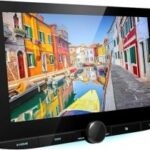OBD2 Bluetooth scanners have become indispensable tools for car enthusiasts and professional mechanics alike. These handy devices plug into your car’s OBD2 port and wirelessly transmit diagnostic data to your smartphone, tablet, or laptop. This allows for real-time monitoring of your vehicle’s health, reading trouble codes, and even performing basic maintenance tasks right from your fingertips. Devices like the ELM327 Bluetooth OBD-II adapter are popular for their affordability and versatility, working with a wide range of vehicles and diagnostic apps.
But here’s a common frustration: many users, particularly those with iPhones and iPads, find that their Bluetooth OBD2 scanners simply won’t connect to their iOS devices. While Android devices often pair seamlessly, Apple’s iPhones and iPads can present a unique challenge. Why does this happen, and what can you do about it?
To understand this issue, let’s first clarify what Obd2 With Bluetooth actually means. OBD-II (On-Board Diagnostics II) is a standardized system that allows you to access your vehicle’s computer and retrieve a wealth of information about its performance and health. Bluetooth connectivity then allows this data to be transmitted wirelessly to other devices. This combination offers convenience and flexibility, eliminating the need for cumbersome wires and dedicated scan tools.
The appeal of OBD2 Bluetooth scanners is clear. They offer a cost-effective way to:
- Read Diagnostic Trouble Codes (DTCs): Understand why your check engine light is on and diagnose potential issues.
- Monitor Real-time Data: View live parameters like engine temperature, RPM, speed, and sensor readings.
- Clear Trouble Codes: Reset the check engine light after addressing the problem (for informational purposes, professional repair is always recommended).
- Performance Monitoring: Track vehicle performance metrics for tuning and optimization.
However, the roadblock for many iOS users lies in the Bluetooth pairing process. Unlike standard Bluetooth devices that you pair through the iOS settings menu, many OBD2 Bluetooth scanners, especially those based on the ELM327 chip, use a different Bluetooth profile that isn’t directly compatible with the standard iOS Bluetooth configuration for pairing in settings.
When you attempt to pair an ELM327 Bluetooth OBD2 scanner with an iPhone or iPad through the Bluetooth settings, the device often doesn’t appear in the list of available devices. Even if it does, the pairing process typically fails. This is because these scanners are designed to connect directly through the diagnostic application itself, rather than the operating system’s Bluetooth settings.
The reason for this incompatibility often comes down to the Bluetooth profiles supported by the ELM327 and how iOS handles Bluetooth connections. ELM327 devices commonly use Bluetooth Classic, while iOS devices are optimized for Bluetooth Low Energy (BLE) for many standard connections. While iPhones and iPads do support Bluetooth Classic, the method of connection for these OBD2 scanners is not the standard pairing process iOS is designed for.
So, while your Android phone might effortlessly recognize and connect to your OBD2 Bluetooth scanner, your iPhone may seem stubbornly incompatible. This isn’t necessarily a fault of the scanner itself, but rather a limitation in how iOS handles certain types of Bluetooth connections and the specific implementation of Bluetooth in many ELM327 based OBD2 adapters.
